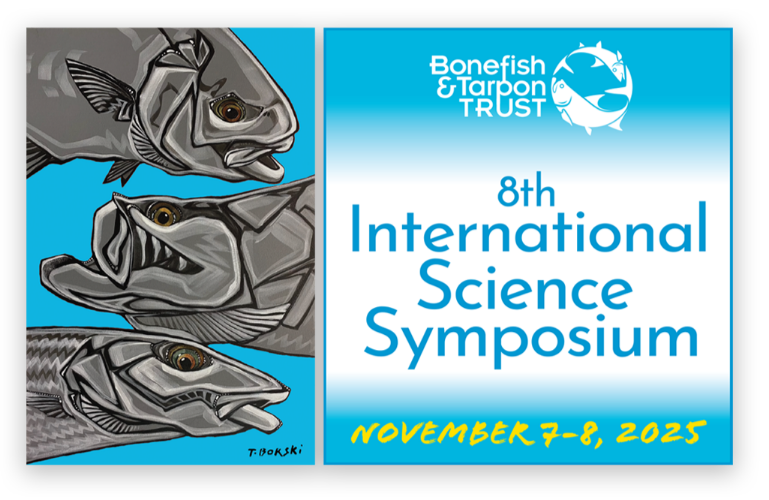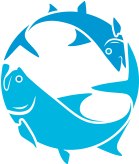Scientist Resources

Call for Abstracts
The overall goal of BTT Symposia is to bring together internationally recognized marine scientists, resource managers, fishing guides, anglers, and educators to share information and learn from one another, and to translate science into conservation policy. The mix of attendees and diversity of presentations and expert panels is unique and empowering.
The 2025 Symposium Theme: Spatial Conservation is Essential for the Future of the Flats Fishery. Presenters are tasked with sharing results of flats fishery-focused research, and demonstrating how research findings have been or should be applied to management.
Submissions are due May 15, 2025.
Science Session Summaries
Friday Morning: 8:30am – Noon. Science-based Conservation
In addition to standard assessment tools, modern fisheries management requires inclusion of environmental, spatial, and habitat data, as well as stakeholder engagement and alternative assessment methods, in the form of actionable science. Actionable Science is defined as “data, analyses, projections, or tools that can support decisions in natural resource management; it includes not only information, but also guidance on the appropriate use of that information.” (Beier et al 2016). However, the actionable science must be conceived and conducted in a framework of an integrated approach. Presentations in this session will share examples of actionable science with direct applications to information gaps related to management needs.
Friday Afternoon: 1:00pm – 5:00pm. Collaborative Science and Conservation
Modern science and conservation require public input and support in formulating research and conservation strategies. This is especially the case given that stresses to natural systems are increasing rapidly, outpacing the ability of management agencies to address them. Coproduction is a process that engages all stakeholders in a collaborative process to collectively address conservation challenges. Coproduction is defined as “collaboration among managers, scientists, and other stakeholders, who, after identifying specific decisions to be informed by science, jointly define the scope and context of the problem, research questions, methods, and outputs, make scientific inferences, and develop strategies for the appropriate use of science.” (Beier et al. 2016). This session will be a mix of presentations, panel, and discussion among researchers, fishing guide associations, stakeholders, and resource managers.
Saturday Morning: 8:30am – Noon. Tarpon Conservation
The Atlantic tarpon, revered as the Silver King, is among the most sought-after gamefish across the Western and Eastern Atlantic. Tarpon face numerous threats, including habitat loss, declining water quality, poor catch-and-release practices, and overfishing. Recognizing the need for management strategies that encompass the full scope of a tarpon’s life cycle and their annual migrations as adults, Bonefish & Tarpon Trust and its partners have made large strides in understanding tarpon connectivity and developing targeted science-based management solutions. This session brings together leading scientists and legendary tarpon guides to address region-specific challenges and share innovative conservation solutions, all aimed at ensuring the long-term sustainability of tarpon and contributing to the next Atlantic tarpon IUCN assessment.
Saturday Afternoon: 1:00pm – 5:00pm. Landscape Conservation Applications
The challenges of modern fisheries management and conservation require a paradigm shift toward a multidisciplinary, integrated approach that incorporates stakeholders, scientists, and resource managers. The new paradigm must break down the silo structure that has dominated natural resource management. This session will focus on the application of actionable knowledge to guide a landscape conservation approach for fisheries management. Actionable Knowledge is defined as: “the creative intersection between what we know and putting what we know into everyday practice” (Blood, 2006), and refers to “information that can be directly applied to make informed decisions or take specific actions.” (Bossé and Barès, 2022). The presentations in this session will provide examples of a science-based landscape conservation approach for flats fisheries management.



